The complete Ricky Rat vs Fnnch saga
/Me and Jeni have spent a lot of time talking about the Ricky Rat vs fnnch debacle.
The story is a lot bigger than just Ricky Rat and fnnch, obviously, but for the sake of storytelling they make a great couple.
Throughout the pandemic, the feud between Ricky Rat and fnnch became a parable about the battle for the soul of San Francisco. It was also a fun diversion in dark times. It was one of the first subjects that Jeni and I came together to talk about on video and the ongoing story has kept us both hooked for over a year.
When we got together for the Art Haus on the Russian River, our man Quishi Yu filmed an hour long conversation between Jeni and I that starts out with Ricky Ray and fnnch before tumbling through everything from professional wrestling to the politics of flag burning.
It’s probably worth noting that we were drinking and smoking hash throughout the conversation, and I took just a teensy weensy dose of mushrooms right before we started shooting.
If you’re new to the saga, let me recap the story so far…
fnnch showed up in San Francisco sometime in the mid 2010’s. He came to SF from the Midwest to pursue lucrative opportunities in tech then parlayed his money, status, and privilege into opportunities to cosplay as a street artist.
I hate to be rude (jk I love it) but some critics say fnnch’s art is nice looking but shallow and lacking in substance. Most of his works are stylistically simple images that are strategically placed in photogenic locales in some of SF’s bougiest neighborhoods, which he has access to because of his deep pockets. His work typically looks like it was meant to be a precious background for photos of fancy chicks and their fancy little dogs.
But who am I to say that street art is supposed to be anything more? I’m not here to tell anyone what they’re supposed to do, it’s against my religion. I’m not the gatekeeper of street art. I’ve got no skin in that game. And undoubtedly, a lot of people love fnnch’s work.
Is fnnch a fraud “street artist”?
I don’t enforce the rules of street art, I’m just a fan of the medium. I know a little bit about the history of street art and the world that surrounds it but I’m no expert.
It seems to me like fnnch capitalizes on all the superficial benefits that come from the title “street artist” without having had to take any of the risks. He is the ultimate outcome of the commercialization and commodification of “street art”. The next logical step following Mr Brainwash and the narrative of Exit Through The Gift Shop.
In this article fnnch plays the outlaw. He’s quoted as saying to the reporter “There’s only one rule: Let me know if a cop is coming. Like, nothing else really matters.” It’s implied that his moniker is a necessity to stay one step ahead of the long arm of the law, not just a cute and clever little piece of branding.
fnnch is pretending to be an outsider, a criminal, a scofflaw. He’s not any of those things; but in the history of street art, artists really were chased down by the cops, thrown in jail, even killed. It all happened long before Banksy inadvertently turned the term “Street Artist” into a hot marketing angle with mainstream appeal. When fnnch pretends to be a street artist as part of a commercial marketing ploy, he is cashing in on equity the pioneers of the medium built with blood, sweat, and jail time.
When the pandemic started, Fnnch was one of the clever entrepreneurial minded artists who made the most of all the plywood that suddenly went up around San Francisco. Pretty quickly, his Honey Bears— which had already been popping up around town— were everywhere.
He then started promoting them as the “Honey Bear Hunt”, meant to alleviate the weird restlessness of those early pandemic days. This was genuinely a moment of levity and joy for Jeni and her appreciation of the experience is contagious.
A few artists hit during the pandemic— Calamity Fair, Kate Tova, and Ricky Rat all come to mind— but none as much as fnnch.
Enter the Rat
Ricky Rat was mostly making comics before the pandemic, but he seems to have been dabbling in wheat paste and graffiti for awhile. Similar to fnnch— when all the plywood went up, Ricky Rat jumped at the opportunity.
The Ricky Rat character is also easily comparable to fnnch’s work: his cartoon Rat is an aesthetically simple icon that has a light, friendly aesthetic. Ricky Rat is snarky in contrast to fnnch’s saccharin sincerity, but no moreso than Bart Simpson. The rat frequently uses Bay Area slang to comment on trending political topics and takes a pretty routine SF progressive stance that covers a lot of the same ground as fnnch: “Wear a mask”, “Racism is bad”, etc.
Despite the similarities, many of Ricky Rat’s pieces specifically targeted fnnch’s work by interacting disrespectfully with it. The Rat frequently mocked fnnch’s Honeybears as representing unwanted outsiders and gentrifiers.
The story got a lot more attention after a local artist and activist named Doggtown Dro confronted fnnch.
Doggtown Dro posted an 11 minute video to Instagram in which he gives fnnch a piece of his mind while fnnch uncomfortably squirms through an awkward self defense. fnnch had been cleaning one of his murals in the Castro that had repeatedly been vandalized when Doggtown Dro took up the conversation. Through the video, fnnch and his assistants flounder while Dro hammers his message: fnnch’s work harms the vulnerable communities for which he claims to be a champion.
Jeni and I talked a bit about Doggtown Dro and after I posted the first cut of the conversation, he responded with a rap.
I love this rap. Definitely the first time anybody has ever dissed me in a rap. Huge honor. Plus he didn’t say anything all that mean and he was actually pretty complimentary about our video.
He hit back at Jeni a little bit harder than me but it was all pretty light hearted and it didn’t hurt her feelings any. Jeni thought Dro’s confrontation with fnnch was just a play to get attention by bullying a high profile soft target. I can see why Jeni would feel that way, but I can also see way Dro would take offense to it. For better or worse, Doggtown Dro generated a lot of attention for his cause by pushing around fnnch, who came out of the whole thing looking like a twerp.
The story of San Francisco’s existing street art community pushing back on fnnch’s gentrifying presence became a popular headline on local blogs and even made its way to the front page of the Chronicle. Ricky Rat was frequently presented as the protagonist in a David vs Goliath story, but no showdown has come from the feud and everyone involved seems more interested in quietly moving on to greener pastures.
How fnnch’s Honey Bears Became the Most Despised Street Art in San Francisco
San Francisco’s Honey Bears: Harmlessly Cute, or Symbols of Gentrification?
THE BEAUTY & ‘BEEF’ IN SAN FRANCISCO’S STREET ART SCENE
Is this the moment San Francisco turns against fnnch’s honey bears?
Epilogue
Ricky Rat demurred from being the face of the fight against fnnch, but he certainly benefited from the press. He has done a few art shows and he continues to sell comics and merch on his website. I’ve got a couple of his comics on my shelf and a Ricky Rat tee shirt that consistently starts great conversations on Polk Street, which is probably the epicenter of Ricky Rat’s infamy.
Most notably, he wound up in some sort of licensing deal on weed— Ricky Rat’s Cheese. It’s a really fun way for an artist to monetize their work. It feels very San Francisco and very 2020’s.
Fnnch has also done pretty well in monetizing his art.
He’s got a deal with Williams and Sonoma. Is it still “street art” if it’s on a cheese plate?
He also dove right into NFTs and crypto. Seems like another good business to be in.
SF street artist fnnch sells NFT honey bear portrait of Mark Zuckerberg for $64,000
I think this story has got one more act in it.
After following this story for a year, I started to digest it through my art.
What came out is The Fnncherlude, a series of multimedia pieces that incorporate acrylic paint and collage— including someof fnnch’s signature Honeybears— on canvas.
If there’s one more act in this story, maybe it’s mine to write. After all— who’s to say I can’t make art here?
This is my opportunity to disrupt the existing accepted norms around intellectual, physical, and digital property. This piece is my original work and it owes nothing to the creators of any of it’s individual elements. The artist known as “Ricky Rat” has no more claim to this piece than does the individual who assembled the physical canvas before it was sold to me at Blick.
I, Bo McGee, am the artist and sole creator of this piece, P.S.We Sho Uld Be Together2.

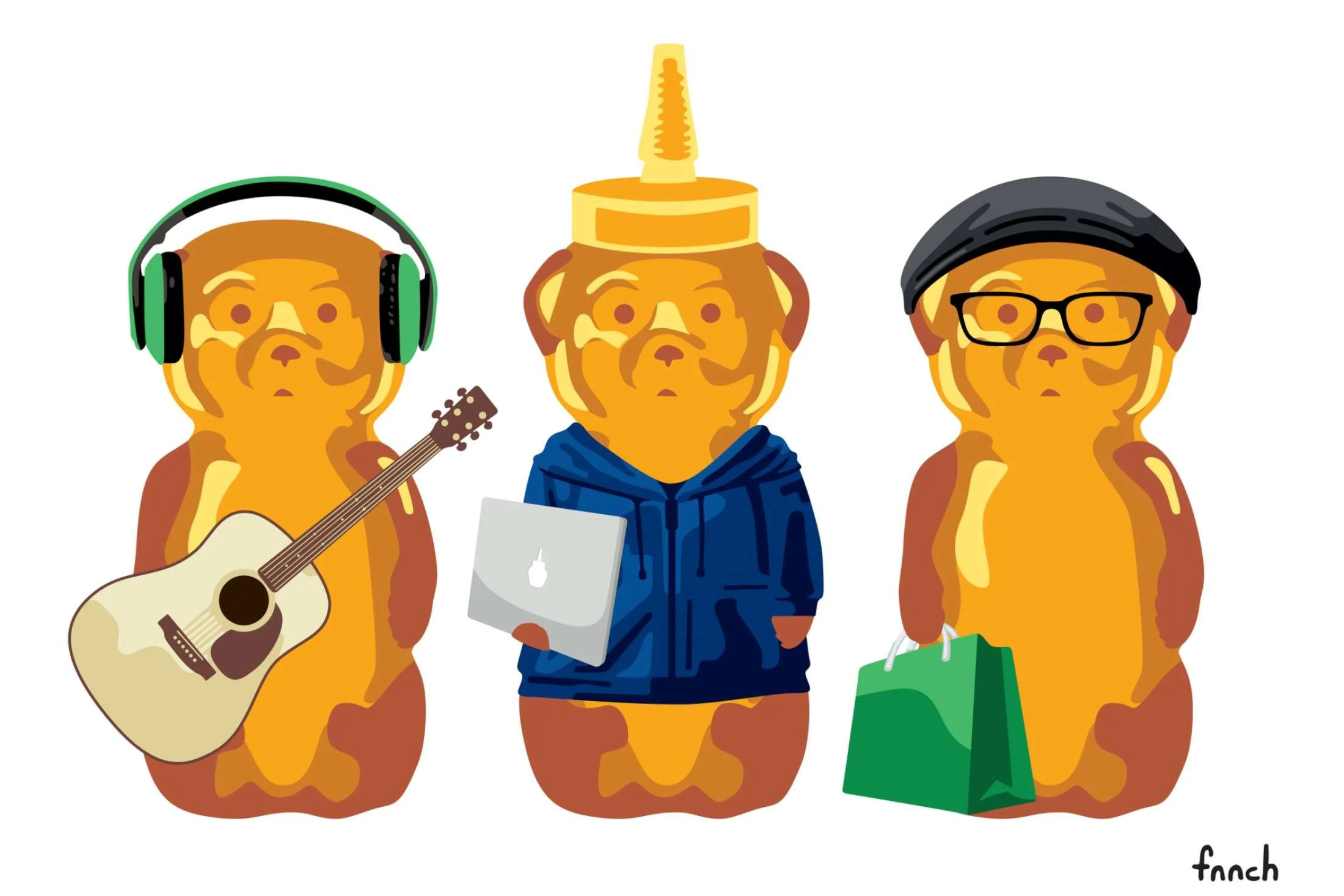

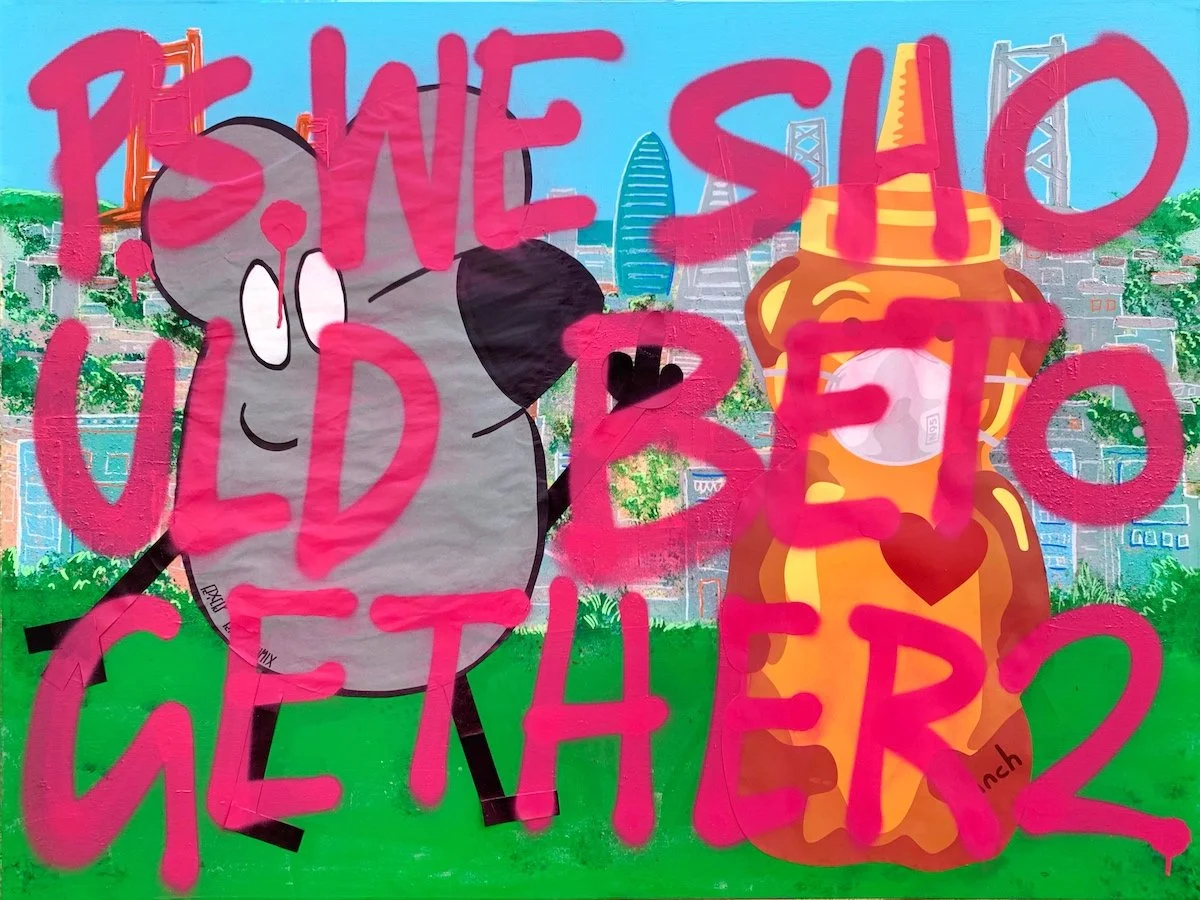

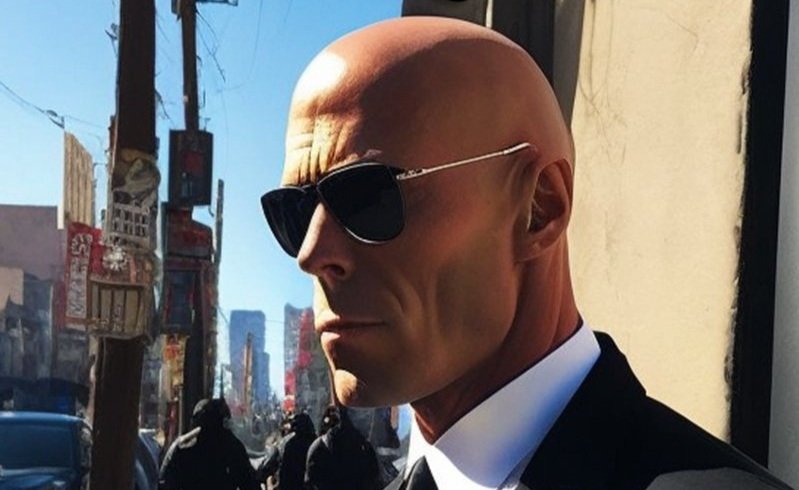
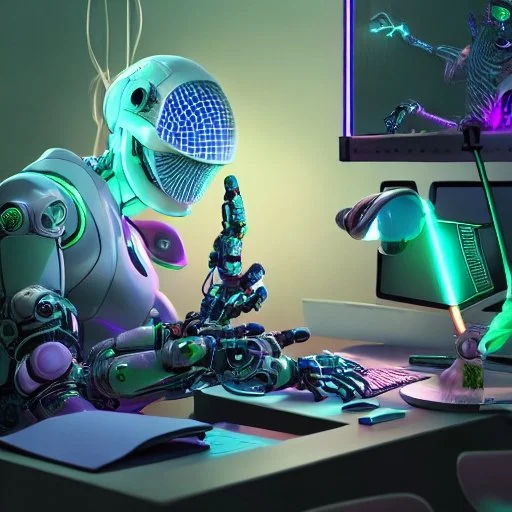


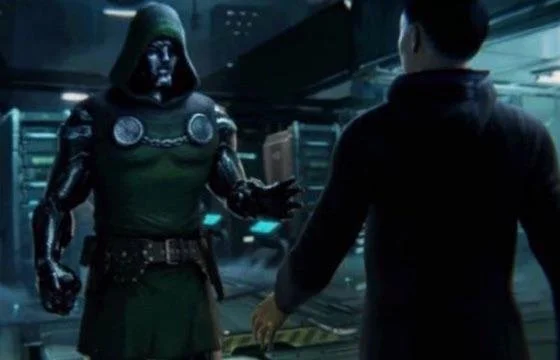





Art Haus Happy Haur on the Russian River, part 2. Featuring Bo McGee and Jeni Laboy.